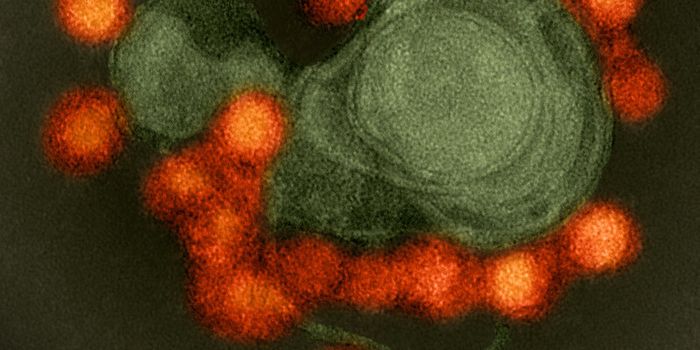Good Brain Tumor Drugs Come In Small Packages
It isn’t easy to wrap the head around just how tiny nanoparticles are—a billionth of a meter in diameter. They may be small, but cancer researchers have high hopes that these drug-delivering particles could revolutionize the way we treat cancer.
Nanoparticles have many advantages over traditional approaches to treating cancer, such as chemotherapy and radiation: they have the potential to deliver more potent cancer-killing with fewer side effects. Their main benefit is that they can be designed to target a specific organ or tissue type. This means that the nanoparticles could (at least theoretically) hone in on the tumor, penetrate it, and deliver its cytotoxic cargo slowly over a period of time, leaving healthy tissues untouched.
A recent study has brought forward more encouraging results to support the potential of nanoparticle cancer therapies further. A team of scientists led by UNC Lineberger Comprehensive Cancer Center’s Timothy R. Gershon was looking for new ways to treat medulloblastomas. These malignant brain tumors—the most common pediatric brain tumor—form in the cerebellum, the part of the brain that controls bodily functions such as movement and balance.
Gershon and colleagues developed a strategy for using two drugs (an approved breast cancer drug and sapanisertib, an experimental small molecule inhibitor) packaged in a nanoparticle formulation to deliver the drugs to the brain. Getting treatments across the blood-brain barrier and into neural tissues has been a long-standing hurdle for drug developers. This barrier protects the brain by only allowing small molecules (such as nanoparticles) to pass through.
The study was featured in the journal Science Advances.
In their report, the team observed that this unique drug combination and delivery strategy extended the survival of animals in a mouse model of medulloblastoma.
The survival rate for children diagnosed with medulloblastomas drops significantly when the tumor spreads or returns after a course of surgery, chemotherapy, and radiation. Because the brain is so sensitive (and medulloblastomas tend to become resistant to treatments), researchers are looking to nanotechnology as a gentler, more targeted approach to battling these tumors.
The corresponding author of the study, Marina Sokolsky-Papkov, said: “The nanoparticle formulation incorporating palbociclib plus sapanisertib may also combine well with standard radiation, potentially enabling lower, less toxic doses of radiation without increasing recurrence risk.” Based on their positive preclinical data, the authors are looking towards future opportunities to embark on human testing in clinical trials.
-
APR 30, 2024Immuno-Oncology Virtual Event Series 2024
-
MAY 07, 20243rd International Biosecurity Virtual Symposium
-
SEP 03, 2024Microbiology Week Virtual Event Series 2024
- See More


















































